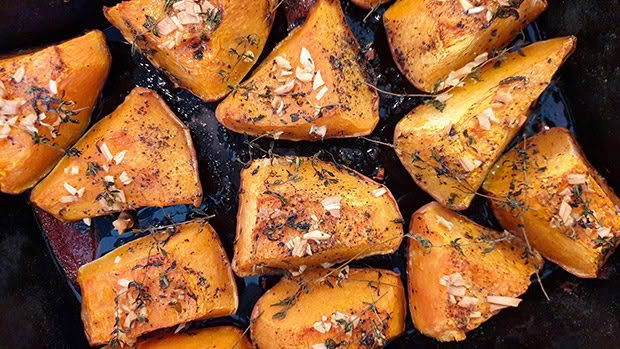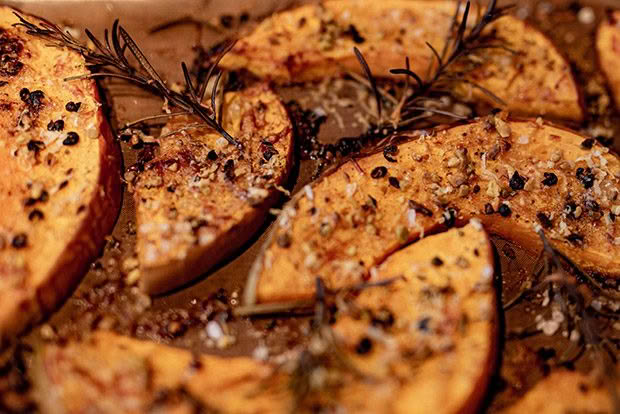Lucy Corry: The most humble, sweetest vegetable of them all
Lucy Corry writes a love letter to kūmara.
One of my favourite whakatauki is the sly ‘Kāore te kūmara e kōrero ana mo tōna ake reka’ (the kūmara doesn’t speak of its own sweetness’). I like this for all sorts of reasons, not just for the obvious link with my favourite vegetable. Since it’s not the mighty kūmara’s way to humble-brag on the vegetable equivalent of LinkedIn or other social media sites, I’m going to step up and do it instead. To me, the kūmara can’t be beaten. In my #teampotato household, I’m #teamkumara every time.
Even though I’m a long-term fan (I’ve been entranced by kūmara ever since seeing the stone kūmara god on Mokoia Island, aged five), my enthusiasm and knowledge pales in comparison to that of Kaipara grower Rick Simpkin. Rick’s family have been growing kūmara in the Far North for three generations and what he doesn’t know about Ipomoea batatas probably isn’t worth knowing. So, in the interests of being as humble as the kūmara, I dug deep into Rick’s experience to learn a bit more.
If you’re not #teamkūmara, it might be worth paying some attention to the variety you’re using. Rick says (and I concur, for what it’s worth) that the purple-skinned variety — officially known as ‘Original Red’ — are best for roasting or homemade kūmara wedges. For the latter, cut them into evenly sized wedges, toss them with a little oil and bake in a hot oven until nearly cooked through (“you can brush them with a bit of butter and brown sugar when they’re nearly finished their time in the oven,” Rick says).

The orange-flesh kūmara (named ‘Beauregard’, like the hero in a bodice-ripper or day-time soap) has a much softer, wetter texture compared to its purple-skinned counterpart. If you’re ever making a dish that calls for sweet potato, ‘Beauregard’ should be your go-to. It cooks faster than ‘Original Red’, mashes up beautifully and is a great stand-in for pumpkin — I use it in these vibrant kūmara flatbreads. Rick reckons it’s great in sweet dishes too.
It’s also worth seeking out the two less common varieties: ‘Tokatoka Gold’ and ‘Purple Dawn’. The ‘Tokatoka Gold’ kūmara, which is indigenous to the Kaipara region, is the kūmara of choice for Rick’s team. As the name suggests, it’s got soft golden flesh and a well-balanced flavour. No prizes for guessing the shade of a Purple Dawn, which has startlingly plummy-coloured flesh. Like ‘Beauregard’ (what a pair these two would make!), ‘Purple Dawn’ has soft flesh that whips up into fantastic mash. To keep the colour vibrant, Rick recommends adding a dash of vinegar into the water when cooking them. This kūmara is considered nutritionally superior to other varieties, so it’s not just a pretty face.
If you’ve always wanted to grow your own kūmara, now’s the time to prepare. Legend — and practice — has it that kūmara beds should be planted when the kōwhai blooms (usually mid-late September, depending on where you are in Aotearoa). Plant them out any earlier and the kūmara may rot in the ground. Truth be told, I’m better at cooking (and eating) kūmara than growing them, but blogger and author Elien Lewis has some great advice on growing them here.

I couldn’t possibly choose just one way to eat kūmara but I cruelly asked Rick to nominate his favourite cooking method anyway. “Nice is simple is best – red kūmara tossed in oil and roasted with its skin on,” he says. “This gives them a crispy caramelised exterior and soft inside. And roasting with their skins on is a great way to pack more nutrients into each bite and looks great on the plate as well!”
No peeling, lots of nutrients and crunchy skin? If you’ll excuse me, I need to go and turn my oven on.

